Grosgrain vs Satin Ribbon: What is the Difference?

Ribbons are a timeless, versatile material, perfect for crafts, gifts, fashion, and more. Grosgrain and satin ribbons are two of the most popular types, but their differences in texture, appearance, and use can be confusing. Knowing the pros and cons of each is key to making the right choice.
This blog breaks down the characteristics, types, and uses of grosgrain and satin ribbons. By the end, you’ll know when to choose each and why it’s useful to have both on hand.
What is Grosgrain Ribbon?
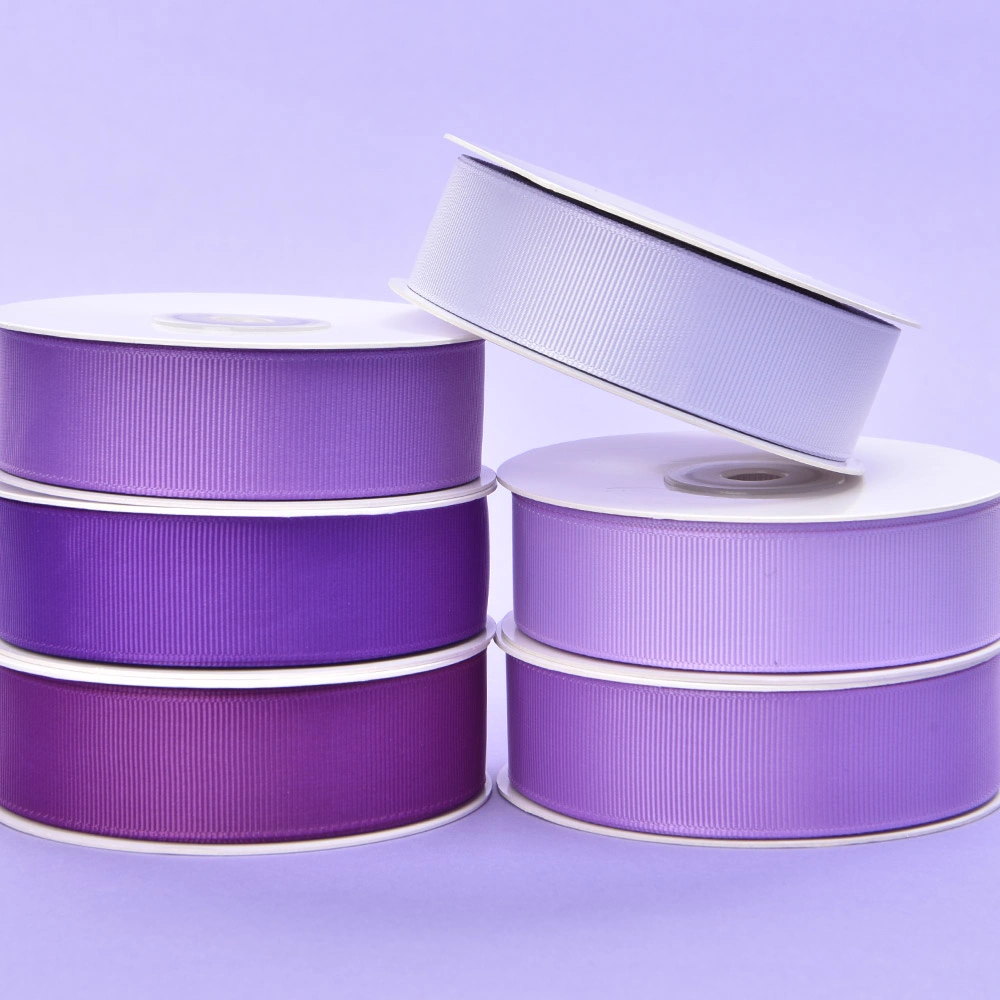
Grosgrain ribbon is a durable, medium-weight ribbon with a matte finish and ribbed texture, created by its heavy weft, which forms raised ribs. This flexible ribbon is often available in black, highlighting its strength and subtle look. The name "grosgrain" comes from French, meaning "coarse texture," referring to its ridges.
For centuries, grosgrain ribbon has been used in fashion, hat-making, and packaging. Its durability and resistance to fraying make it ideal for both practical and decorative uses, as well as for bookbinding.
Types of Grosgrain Ribbon
-
Standard Grosgrain Ribbon: Standard grosgrain ribbon has pronounced ridges and is made from polyester, cotton, or blends. It is available in various widths and colors to suit different needs. Faille is a type of fabric that is heavier than grosgrain but lighter than poplin, highlighting its unique texture and weight.
-
Corded Grosgrain Ribbon: Corded grosgrain is slightly thicker and more structured, giving it even more durability, often used for handbags or industrial applications.
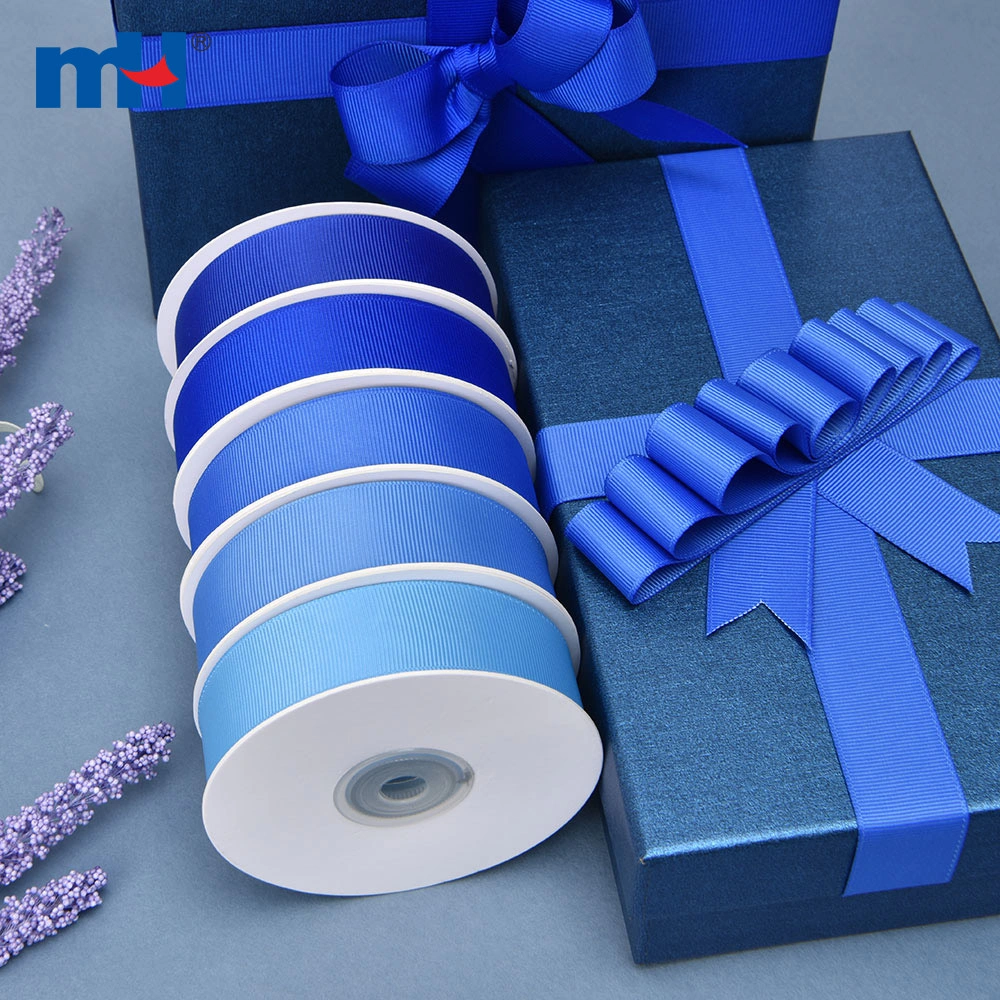
-
Printed Grosgrain Ribbon: This type comes with printed patterns or logos, which makes it perfect for brand customization or specific design needs.
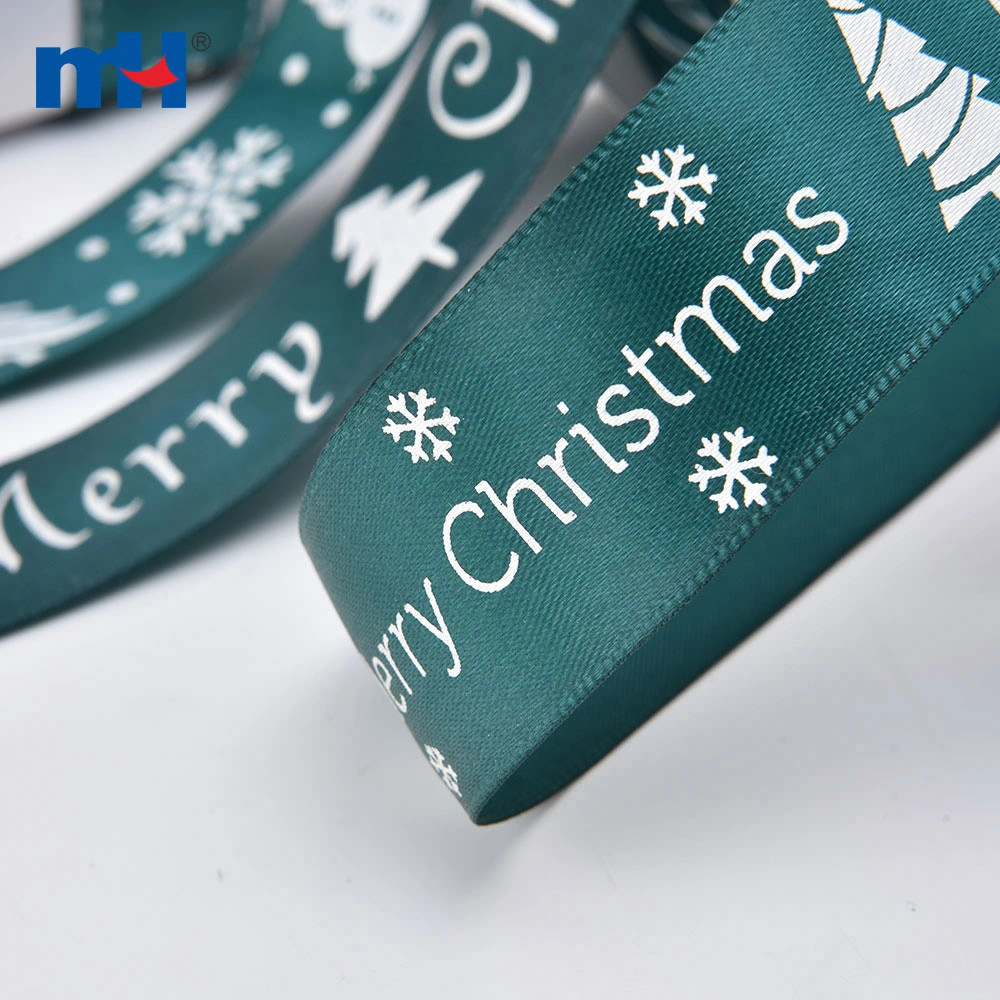
-
Decorative Grosgrain Ribbon: Embellished or double-sided grosgrain ribbons are available for higher-end projects, offering aesthetic appeal alongside sturdiness.
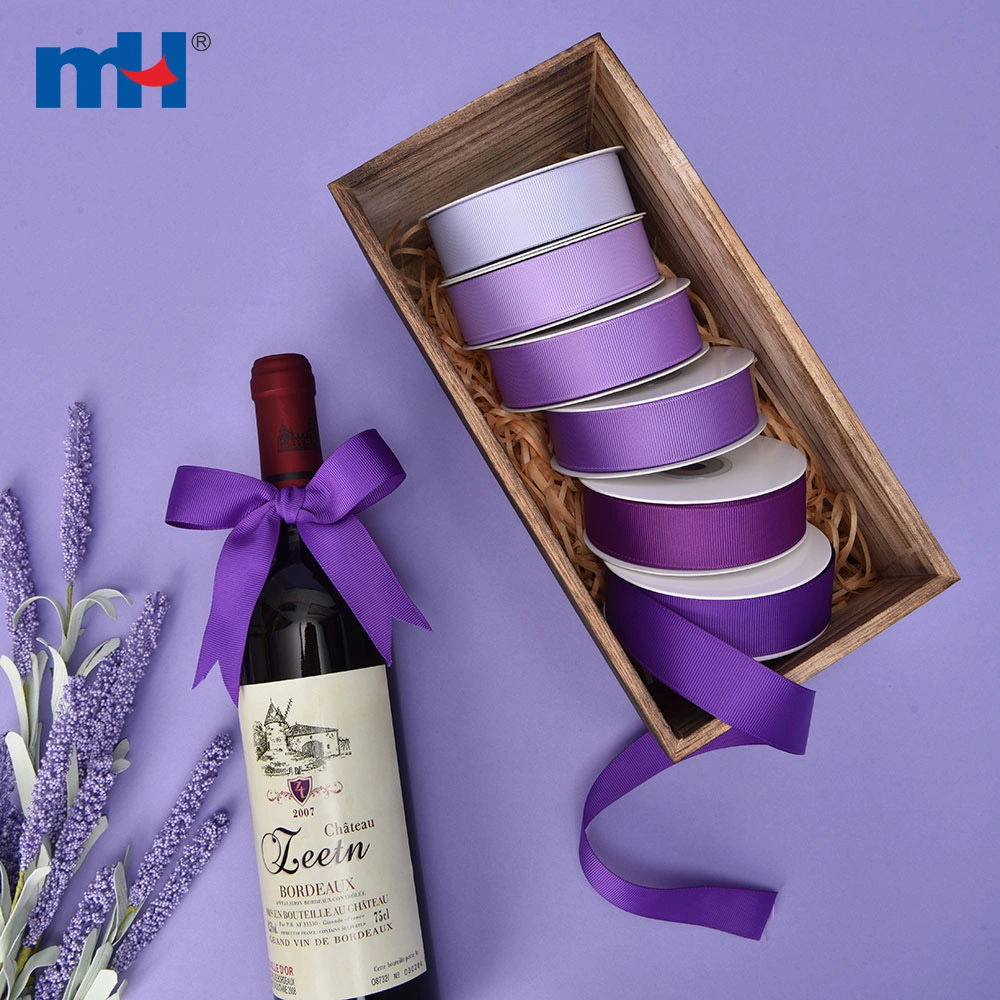
What Do You Use It For, Including Wreaths?
Grosgrain ribbon is valued for both functionality and aesthetics, which opens up a range of applications:
-
Gift Wrapping: Its ribbed texture adds an elegant detail to wrapped presents.
-
Hair Bows: Its durability ensures the bows hold their shape and stay secure.
-
DIY Projects: Popular in crafting, grosgrain ribbon can be used for bag handles and embellishments.
-
Apparel: Used in hems, waistbands, or ties where structure matters.
-
Branding: Due to its customization options, businesses use grosgrain ribbons for tags or packaging.
The Best Ways To Use Grosgrain
Grosgrain ribbon is perfect for projects where bows need to hold their shape, like memorial centerpieces. Its strength and flexibility make it great for full, lasting designs. Use it to wrap a wreath or display it under a loved one’s photo for a meaningful touch.
Grosgrain works well for reusable projects, while satin ribbon is better for temporary uses.
Settle the satin vs. grosgrain debate with Ribbon by Design, offering customizable ribbons for your big day or home decor.
What is Satin Ribbon?
Satin ribbon is known for its smooth, glossy surface and elegant finish. Its soft texture makes it a favorite for clothing like lingerie, nightgowns, and boxer shorts. Made from tightly woven polyester, nylon, silk, or acetate, its luxurious sheen stands out. Satin ribbon is perfect for gift wrapping, wedding decorations, and fashion accessories. Softer than grosgrain, it’s better for decorative uses than heavy-duty tasks.
Double-Faced Satin Ribbon, with its shine on both sides, offers a polished look from any angle.Types of Satin Ribbon
-
Single-Faced Satin Ribbon: Single-faced satin ribbon has one glossy side and one matte side, offering versatility depending on visibility and budget concerns.
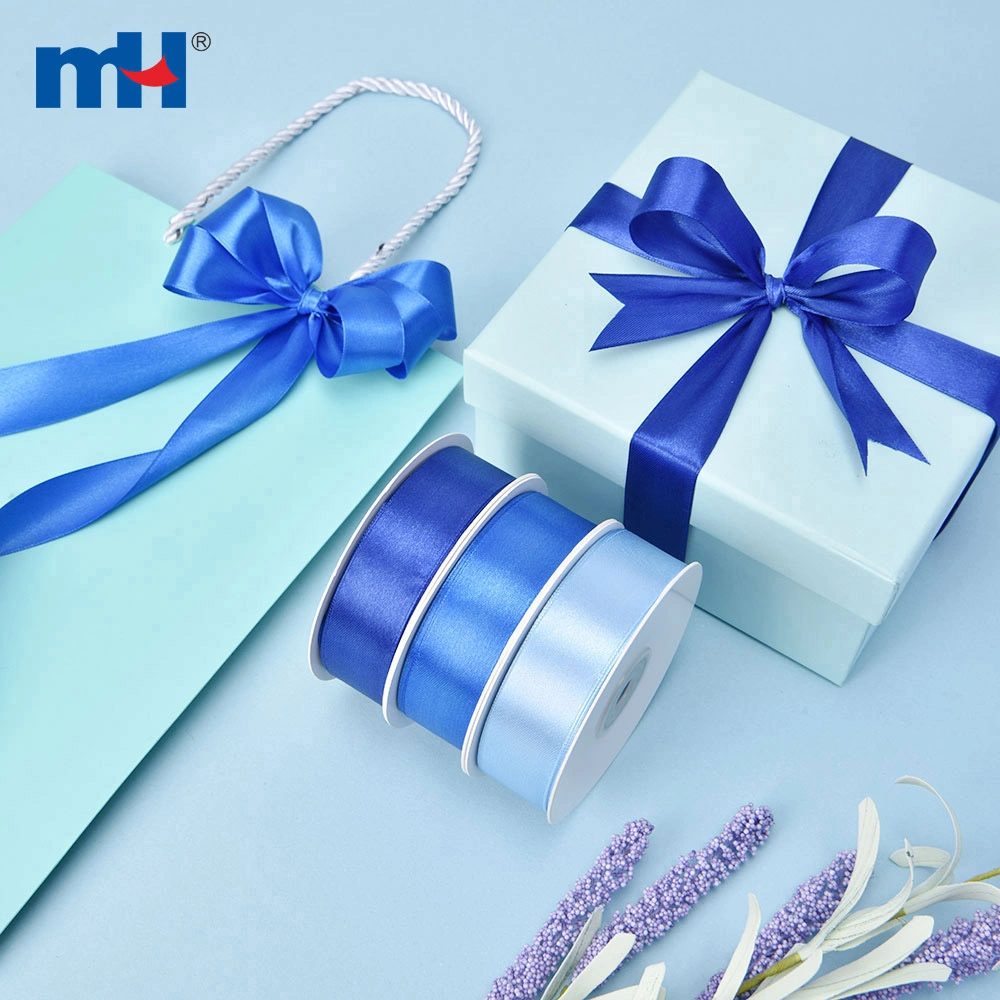
-
Double-Faced Satin Ribbon: Double-faced satin ribbon is shiny on both sides, giving it a more polished, upscale appearance. Its uniform surface is perfect for projects where all ribbon sides are visible.
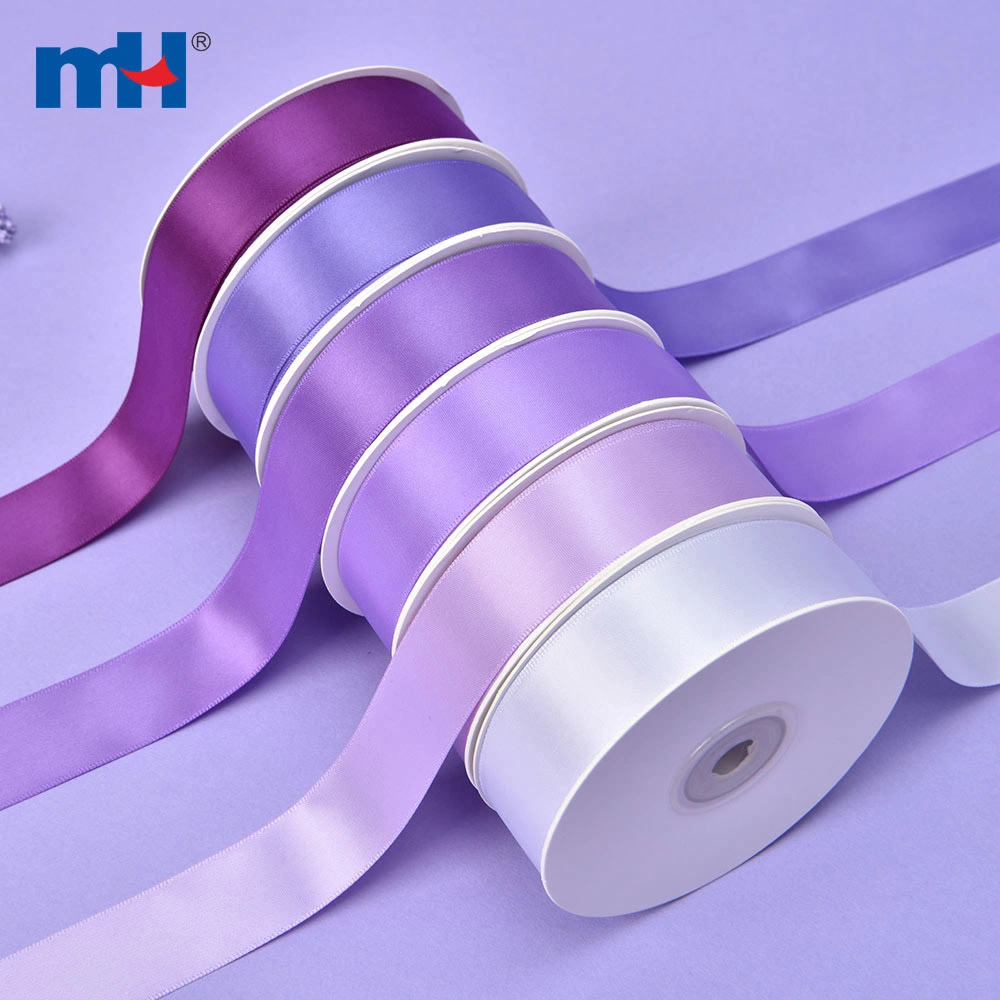
-
Printed Satin Ribbon: This option incorporates designs, patterns, or corporate branding printed onto the surface for customization.
-
Edge-Stitched Satin Ribbon: Designed for durability, this type includes a stitched border for a more defined finish and to reduce fraying.
What Do You Use It For?
Satin ribbons add soft, glamorous, and premium appeal to many projects:
-
Gift Wrapping: Its glossy finish elevates any present with a luxurious look.
-
Wedding Décor: Used for bouquets, chair ribbons, and other embellishments.
-
Fashion Accessories: Popular for sashes, waistbands, and bridal accents.
-
Crafts and DIY: Ideal for delicate projects, such as fabric flowers or decorations.
-
Event Branding: Custom-printed satin ribbons create a polished image at events or corporate settings.
-
Wreaths: Perfect for creating bows and decorations for wreaths, emphasizing its elegant appearance.
The Best Ways To Use Satin
When choosing between satin and grosgrain ribbon, it’s helpful to know which projects each suits best. Satin ribbon is versatile and ideal for floral bouquets, gift wrapping, or tying silverware. It’s also great for party favors, like adding a custom ribbon to a Sweet 16 candy table. The bow adds a nice touch and can be reused later.
What is the Difference Between Grosgrain and Satin Ribbon?
It’s easy to confuse grosgrain and satin ribbon, but they have significant differences in material, texture, aesthetics, and practicality:
|
Characteristic |
Grosgrain Ribbon |
Satin Ribbon |
|---|---|---|
|
Texture |
Matte with ribbed texture |
Smooth and glossy |
|
Durability |
Highly durable, holds shape well |
Less durable; prone to fraying |
|
Aesthetics |
Classic and sturdy look |
Elegant, polished, and luxurious; double-faced satin ribbon has two right sides, providing a sleek look for decorative purposes |
|
Primary Material |
Polyester, cotton, or blends |
Polyester, silk, nylon, or acetate |
|
Best Uses |
Functional projects requiring durability |
Decorative projects prioritizing aesthetics |
|
Customization |
Works well with detailed prints and patterns |
Perfect for high-end or branded designs |
Understanding the difference between grosgrain vs satin ribbon will help you select the right one for your project. Grosgrain is better for sturdy, functional tasks, while satin shines for luxurious, decorative purposes.
Choosing the Right Ribbon for Your Project
Choosing the right ribbon for your project depends on several factors. Grosgrain and satin ribbons are popular options, but their unique qualities suit different purposes. Here are some tips to help you decide:
Occasion: Grosgrain ribbons work well for casual or outdoor events with their sturdy texture. Satin ribbons, with their glossy sheen, are ideal for formal or luxurious occasions.
Texture: Grosgrain ribbons have a ribbed, textured feel, while satin ribbons are smooth and silky, adding a sophisticated touch.
Color: Both come in a variety of colors, so pick one that matches your project’s theme or color scheme.
Durability: Grosgrain ribbons are strong and can handle heavy use, while satin ribbons are delicate and may fray more easily.
Use: Grosgrain is great for tying, sewing, or gluing, while satin’s elegance makes it better for wrapping, draping, or embellishing.
By keeping these factors in mind, you can choose the ribbon that best fits your project for a beautiful result.
Working with Grosgrain and Satin Ribbons
Working with grosgrain and satin ribbons can be enjoyable if you use the right techniques. Here are some tips to handle, tie, and sew these ribbons effectively:
Handling Grosgrain Ribbons: Grosgrain ribbons can be stiff and curl. Use a hot iron to flatten them or spray starch for a crisp finish.
Handling Satin Ribbons: Satin ribbons are delicate and prone to fraying. Handle them gently to maintain their smooth look.
Tying Grosgrain Ribbons: Grosgrain ribbons are great for bows or knots. Tie them firmly and adjust the bow as needed.
Tying Satin Ribbons: Satin ribbons need a soft touch. Tie gently to keep their elegant appearance without damage.
Sewing with Grosgrain Ribbons: Sew grosgrain ribbons by machine or hand, using matching thread for a seamless finish.
Sewing with Satin Ribbons: Satin ribbons require care when sewing. Use matching thread and handle delicately to avoid damage.
By using these tips, you can work with grosgrain and satin ribbons easily, creating professional and beautiful projects.
Do You Need Both Types of Ribbon?
Absolutely! Grosgrain and satin ribbons have unique features that make them great for different projects. Keeping both on hand ensures you're ready for anything, from gift wrapping and branding to crafting hair bows.
Grosgrain ribbon is ideal for structured projects like hair accessories, sturdy wrapping, or bookbinding.
Satin ribbon works best for elegant designs like wedding décor or event embellishments.
For Wholesale Customization Needs, Please Contact MH
If you need a reliable partner for wholesale grosgrain and satin ribbon, MH offers premium products tailored to your needs. Whether it’s custom branding, varied textures, or specific patterns, we deliver exceptional quality at competitive prices.
Contact us today to explore our product catalogs or discuss your customization requirements. Together, we’ll bring your visions to life.
